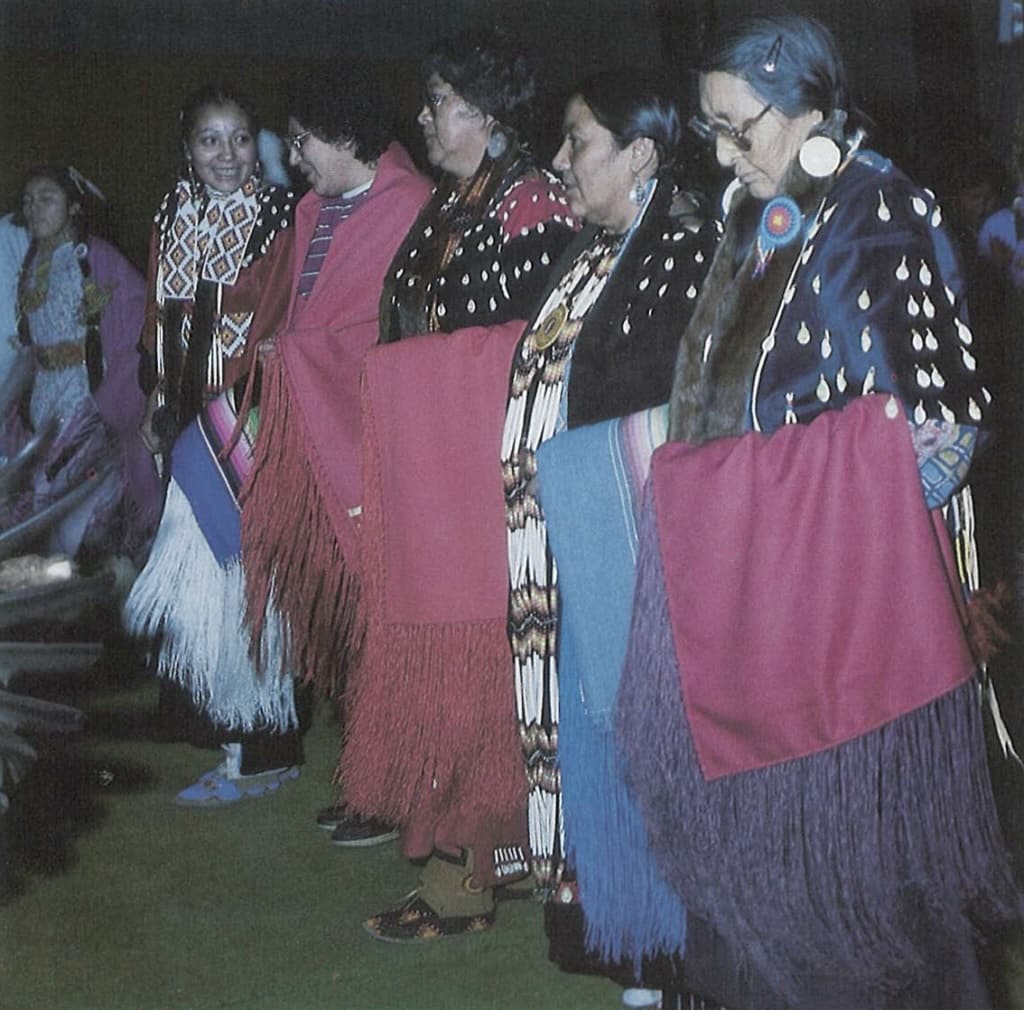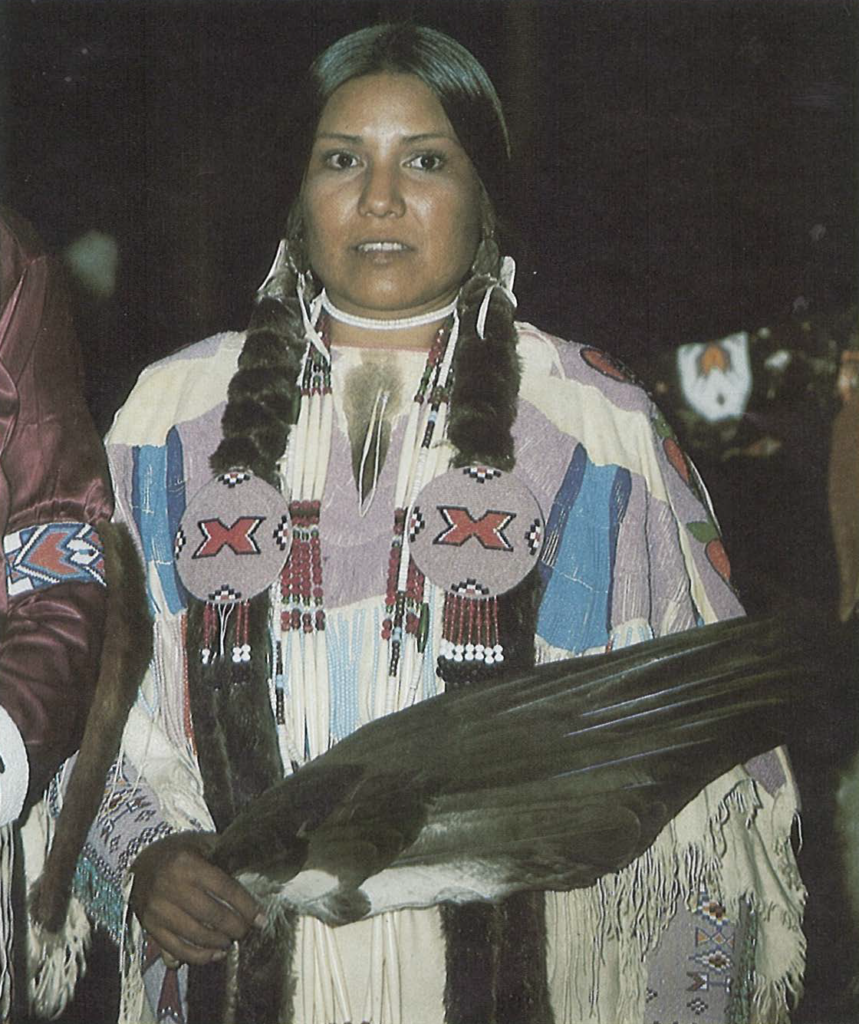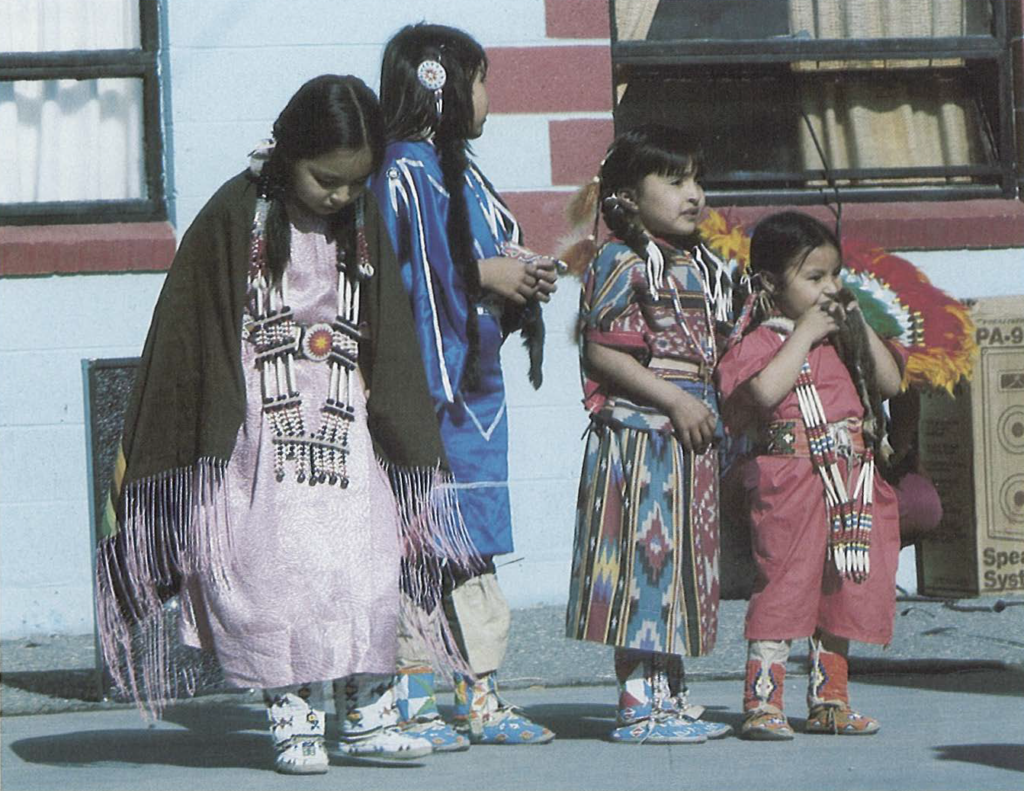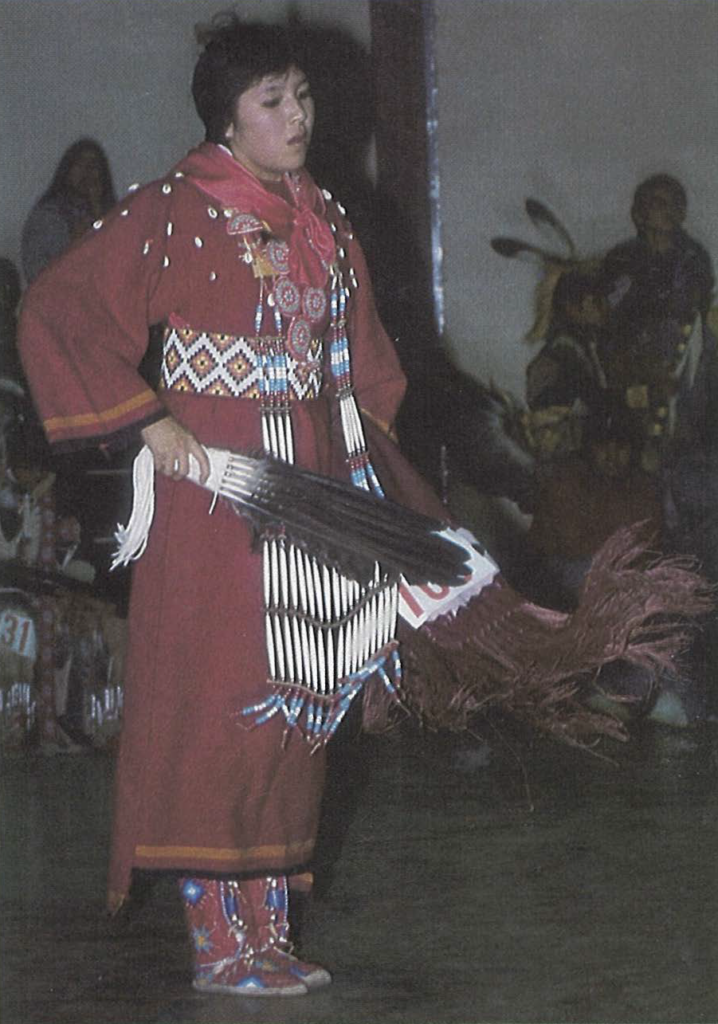June 7, 2024
This story was originally published by St. Stephens Indian Mission Foundation in VOL. XVII APR/MAY/JUNE 1987 NO. 2. St. Stephens Indian Mission Foundation owns the copyright, and the story is reprinted here with permission from the Foundation. More information on the Foundation can be found following the story or by clicking on the link above.
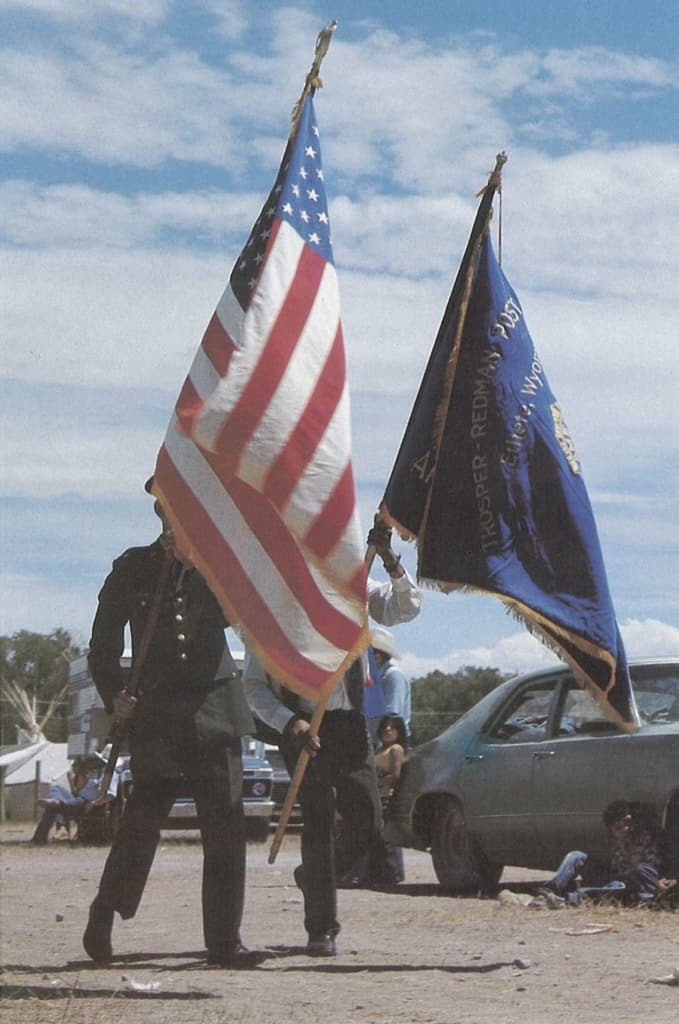
Today, the term pow-wow refers to a festive, social gathering among Native Americans. It is a family activity and a time to take pleasure in the company of old acquaintances, as well as an occasion to make new friends. This celebration includes parades, feasts, giveaways, dance competitions, handgames, horseshoe throwing, softball games, etc. Many people participate in the activities, but some just enjoy watching.
Pow-wows usually begin on Friday evening and end late on Sunday. On the Wind River Reservation, the Jesuit priests from the Mission along with clergy from other denominations are invited to hold a service on Sunday morning. The service, held within the arbor at the pow-wow grounds, is for anyone who would like to attend.
There is not a set format for today’s pow-wow activities and therefore they vary to some degree. The celebration usually begins with a Grand Entry, which is led by a Color Guard followed by various entries, including the Pow-wow Queen and her attendants. After the flags are honored, the sounds of heavy drum beats and singing begin to fill the air. Usually, several drum groups perform during a pow-wow and take turns singing as the announcer calls for the different styles of dance.
A special event observed at many pow-wows is the “Giveaway Ceremony,” a tradition that has been passed down through countless generations. A giveaway is a distribution of material goods as gifts in appreciation for being honored. One occasion in the past for being honored would be when a warrior achieved a great accomplishment in battle. The warrior would be honored during a dance ceremony and he, in turn, would hold a giveaway to show his gratitude for being honored and to share his wealth with the less fortunate members of his tribe.
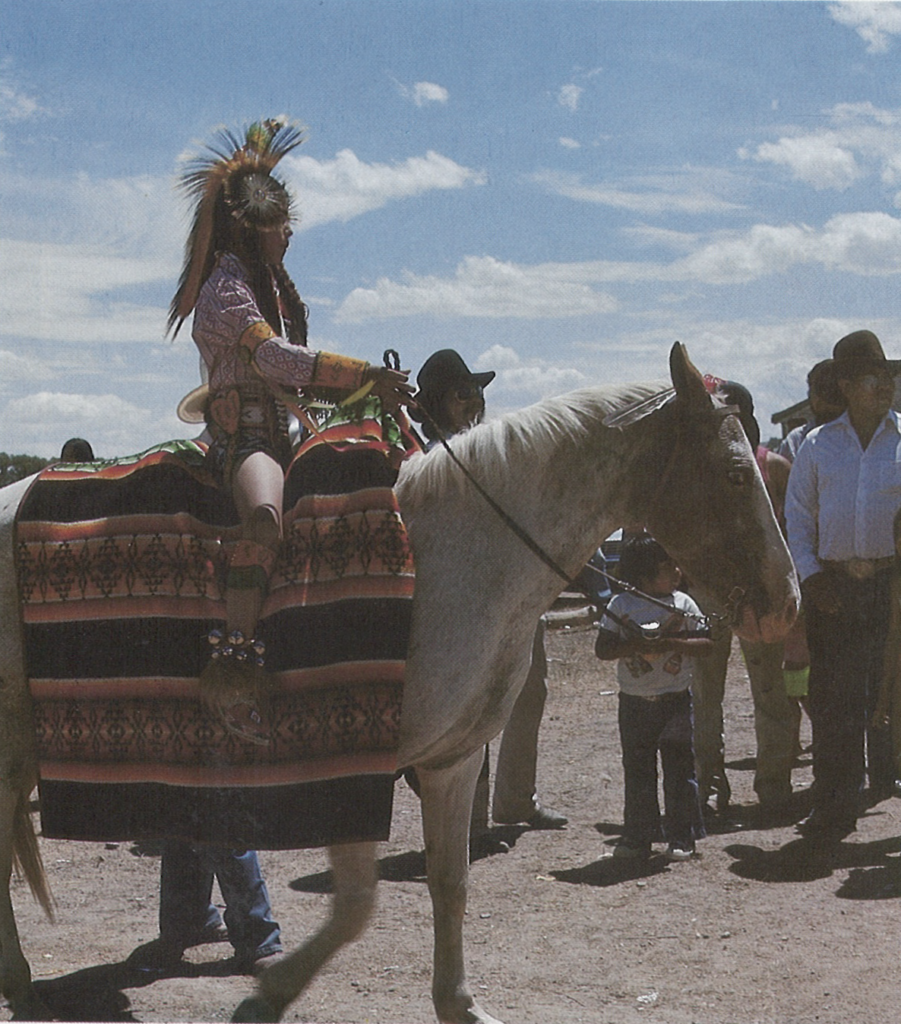
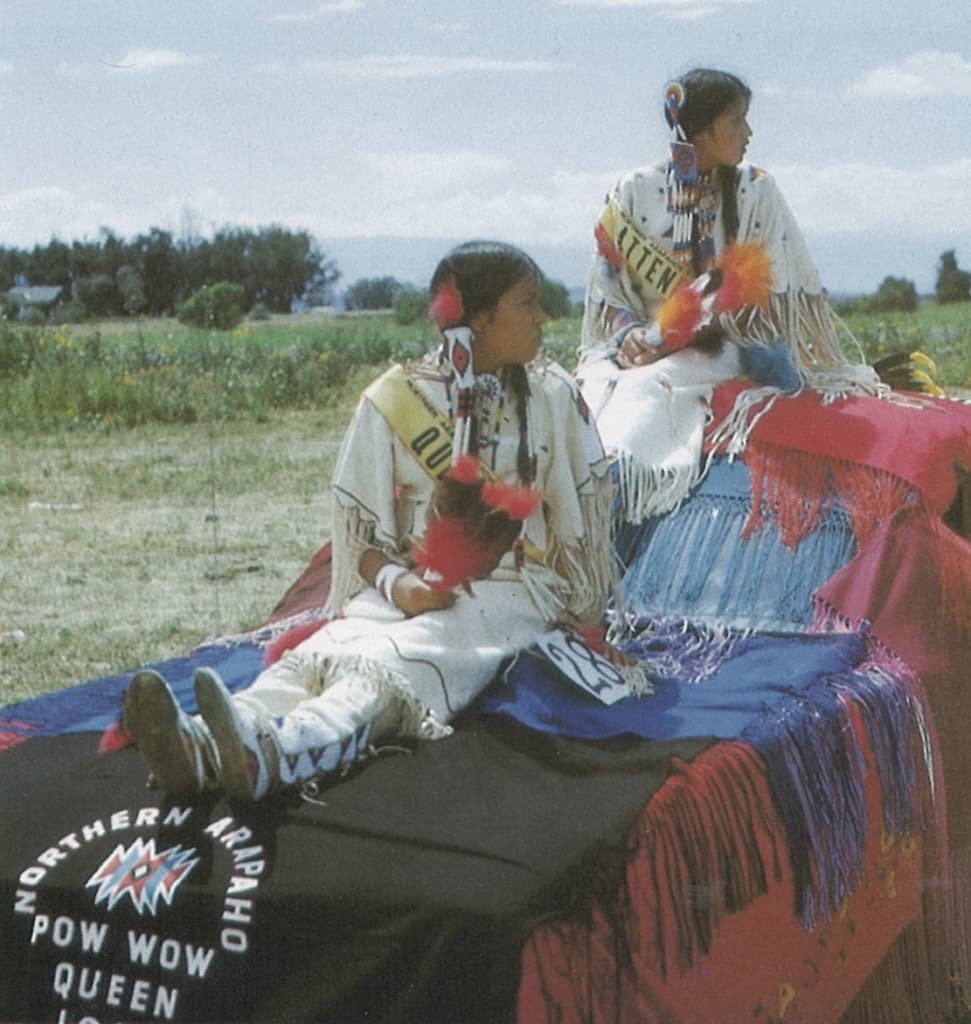
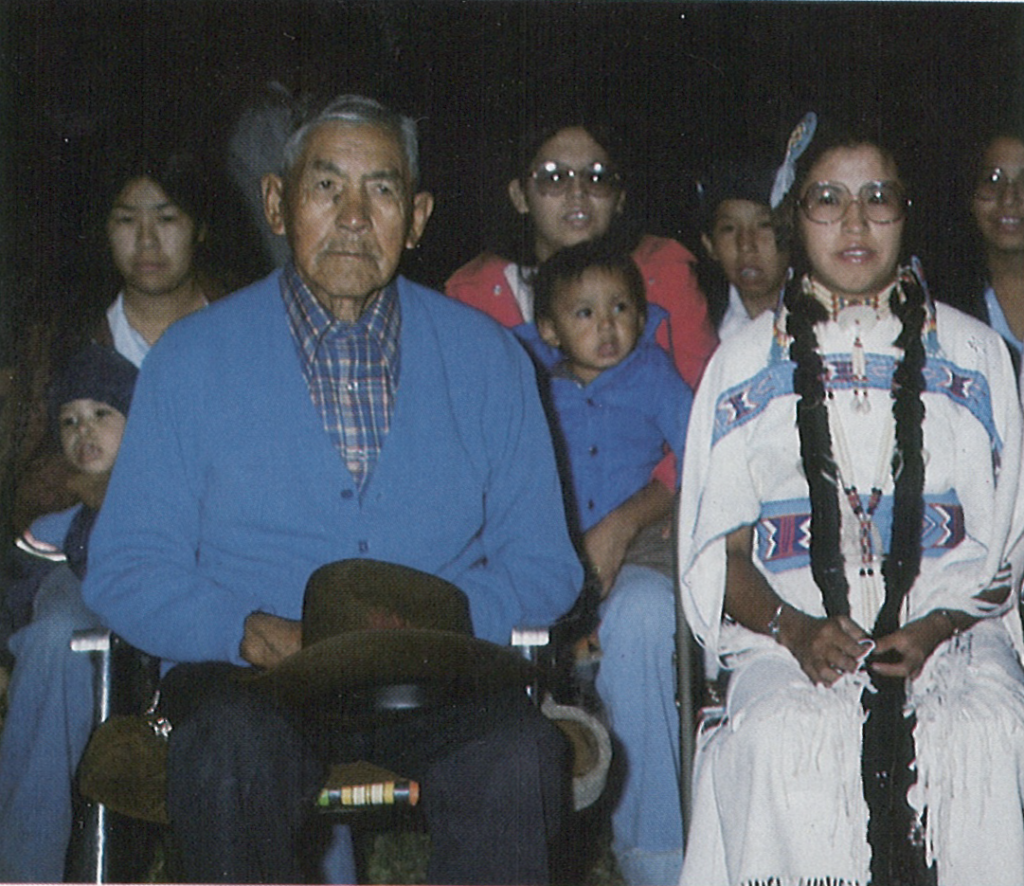
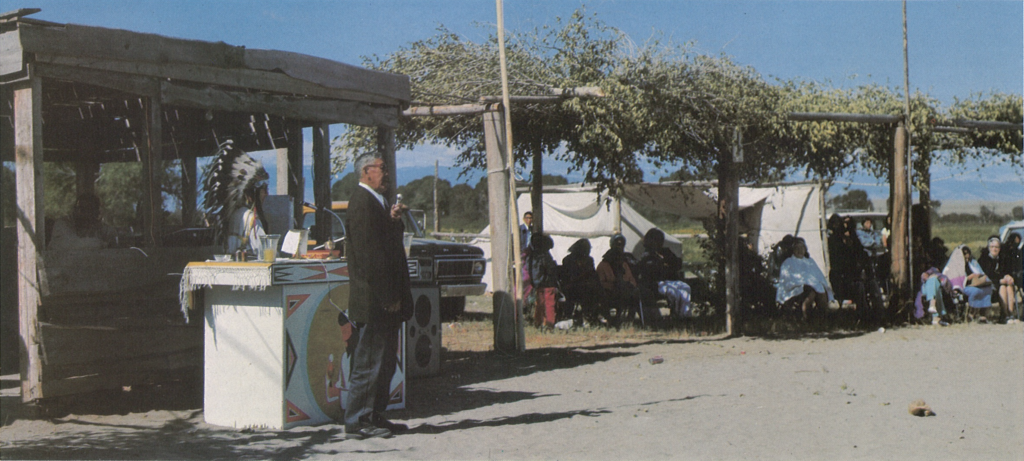
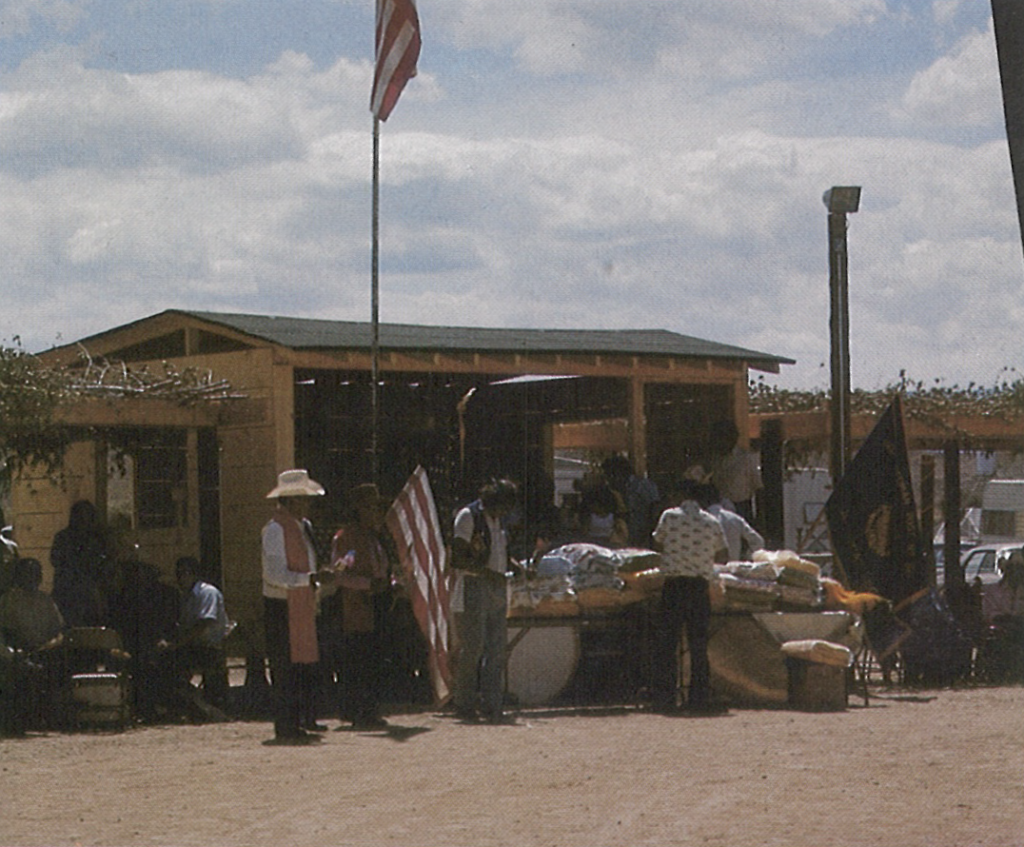
A few reasons for holding a giveaway today are: the family of the Pow-Wow Queen may wish to honor her; a memorial for someone who has passed away since the last pow-wow; to honor a son or daughter who has recently graduated form college. Native Americans are known to be an unselfish and generous people.
Drummers and Dances
Drum groups are an essential part of Indian dancing. From the earliest of times the drum has been a sacred item, the means for sending messages to the Great Spirit. Today, the “Keeper of the Drum” is required to be in attendance at all pow-wows and funerals held on the reservation.
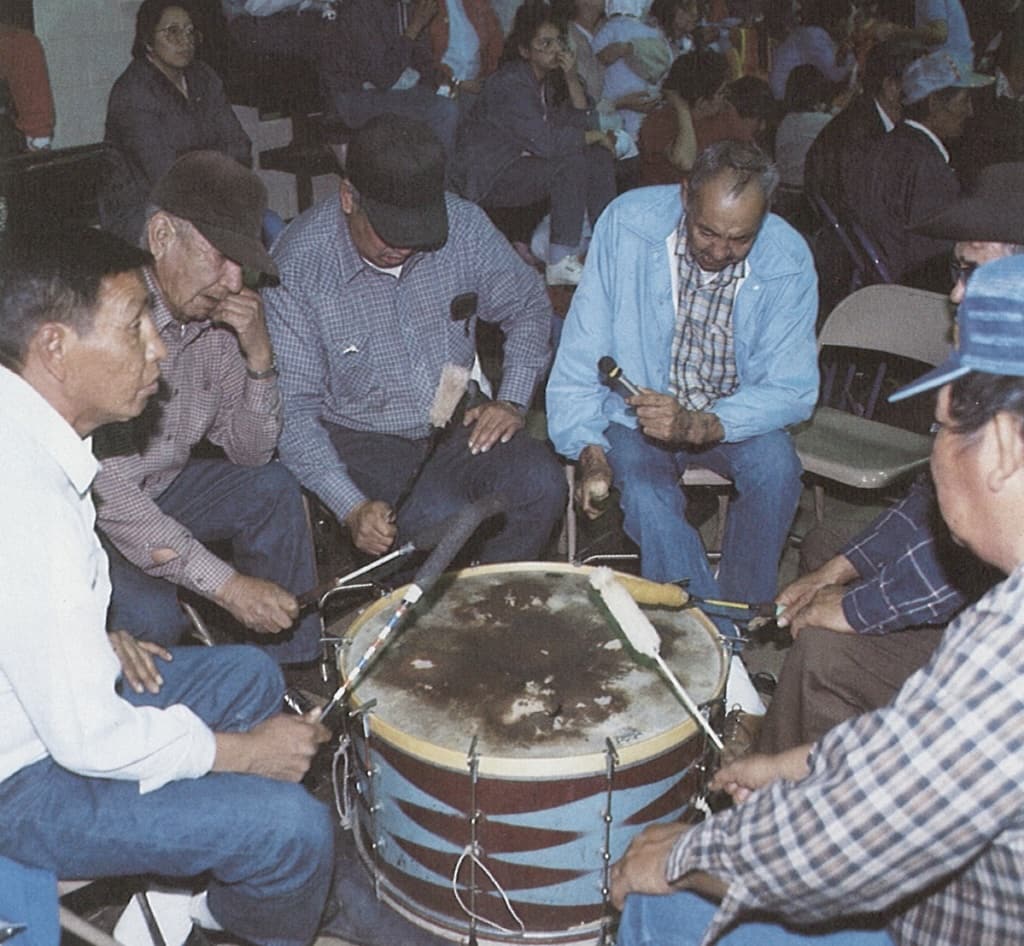
As a drum group begins a song, the lead singer starts and then a second singer will begin as the lead singer nears the end of the first line. The remaining singers will begin to sing after the second singer starts. At the end of the chorus, three accented beats are struck on the drum. At this time, the dancers will bow or bend toward the drum to show their respect. As a rule, the dancers will start when the second singer begins. To give special honor to a certain drum group, participants will sometimes dance by that drum during the entire song.
Songs vary from tribe to tribe, but since the availability of tape recorders, songs have been recorded and passed among the various singers. The songs, which are short and repeated many times, are memorized and sung in unison, rather than in harmony. They are sung in an accented two-four rhythm in either slow, medium or fast tempo.
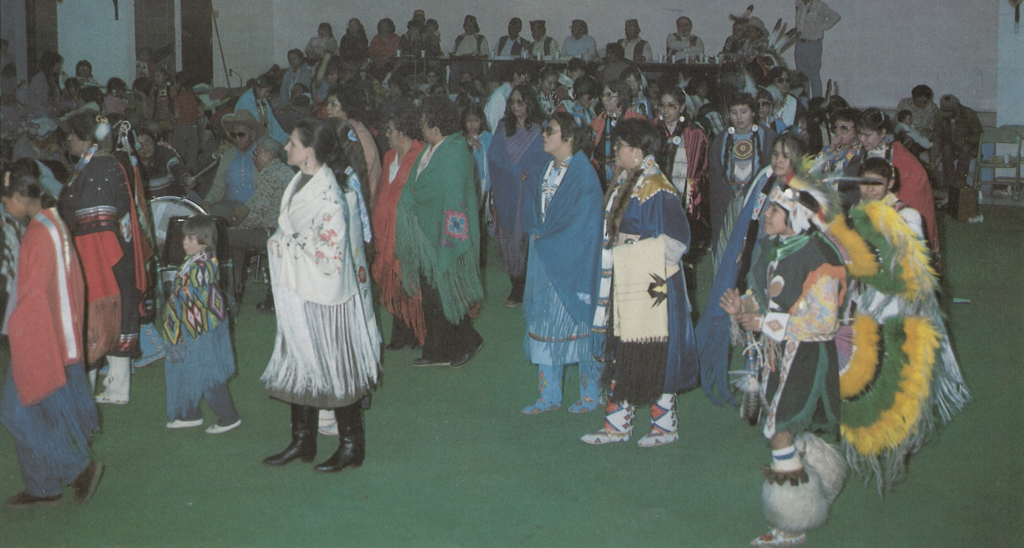
Although women always helped with the singing, religious restrictions kept them from drumming. It has only been in recent years that women have been allowed to drum, and then, only in some tribes.
The pow-wow dancers of today are not required to belong to a society in order to perform. Each person selects his or her own style of dance and this decision will dictate their manner of dress. There are a number of different styles of dancing performed at pow-wows. The announcer may call for a Round Dance or an Inter-Tribal dance. This type of dance encourages all dancers to participate.
Dance competitions are divided by two styles, fancy and traditional. Fancy style dance features intricate footwork, spinning and head movement, and some deep bows. Each dancer invents their own routine and steps. Traditional style is a slower dance and the body movement remains conservative and graceful. Dancers must know the arrangement of the songs in order to design their steps to end on the last note. During dance competitions, each style of dancers is divided into age groups for men and women; young children are divided into several age groups. All dancers do not compete at the same time. For example, the announcer may call for men’s traditional dancers and only those registered in this category will perform.
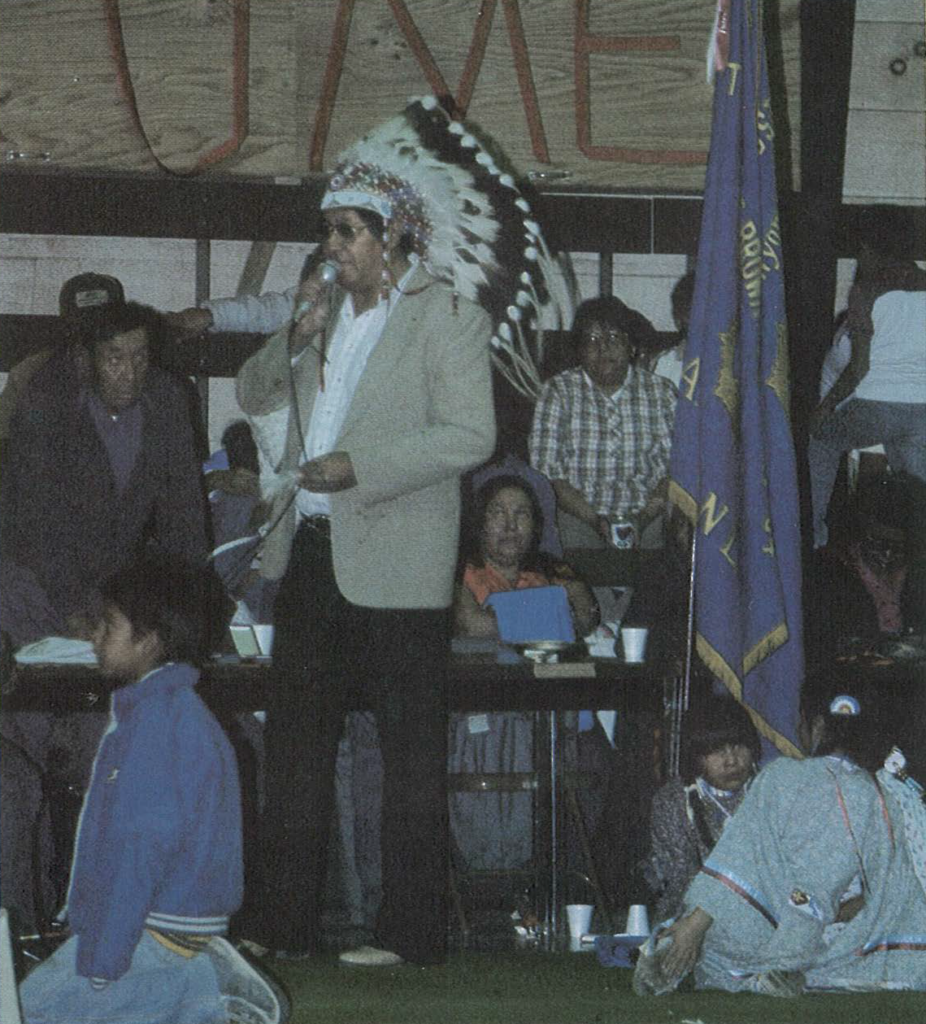
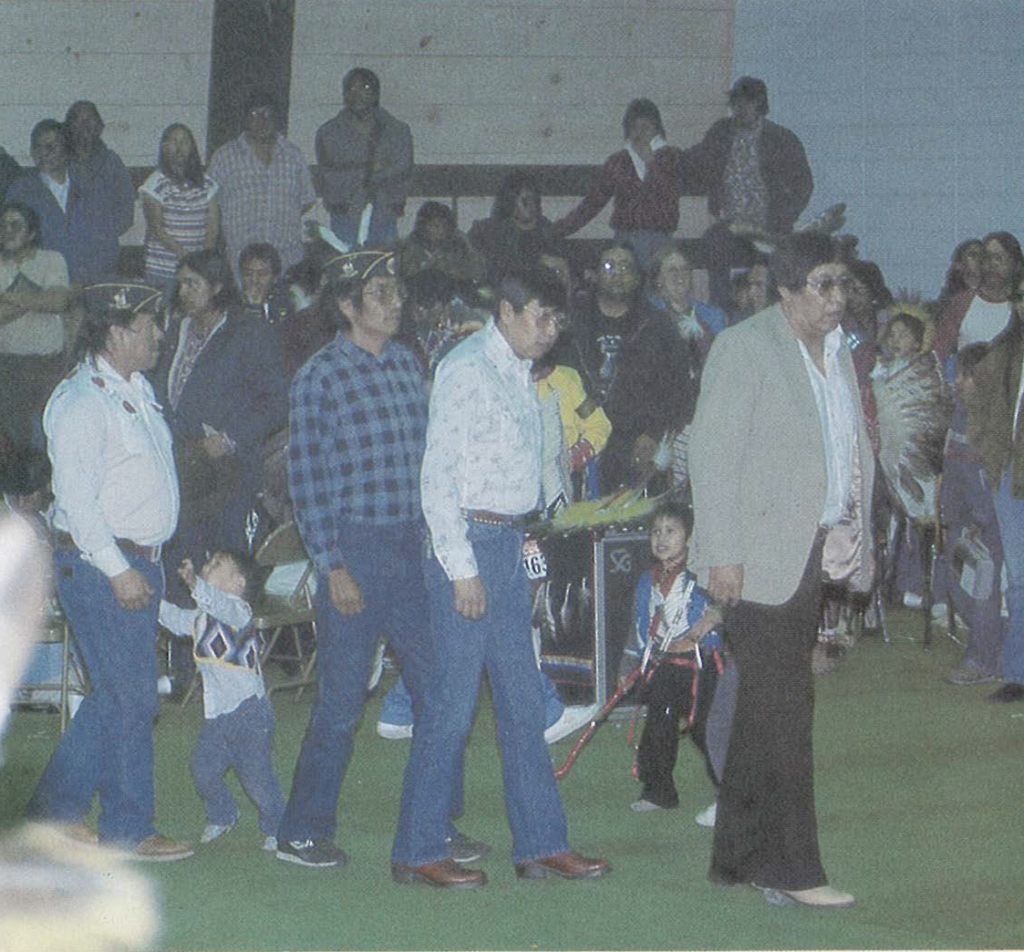
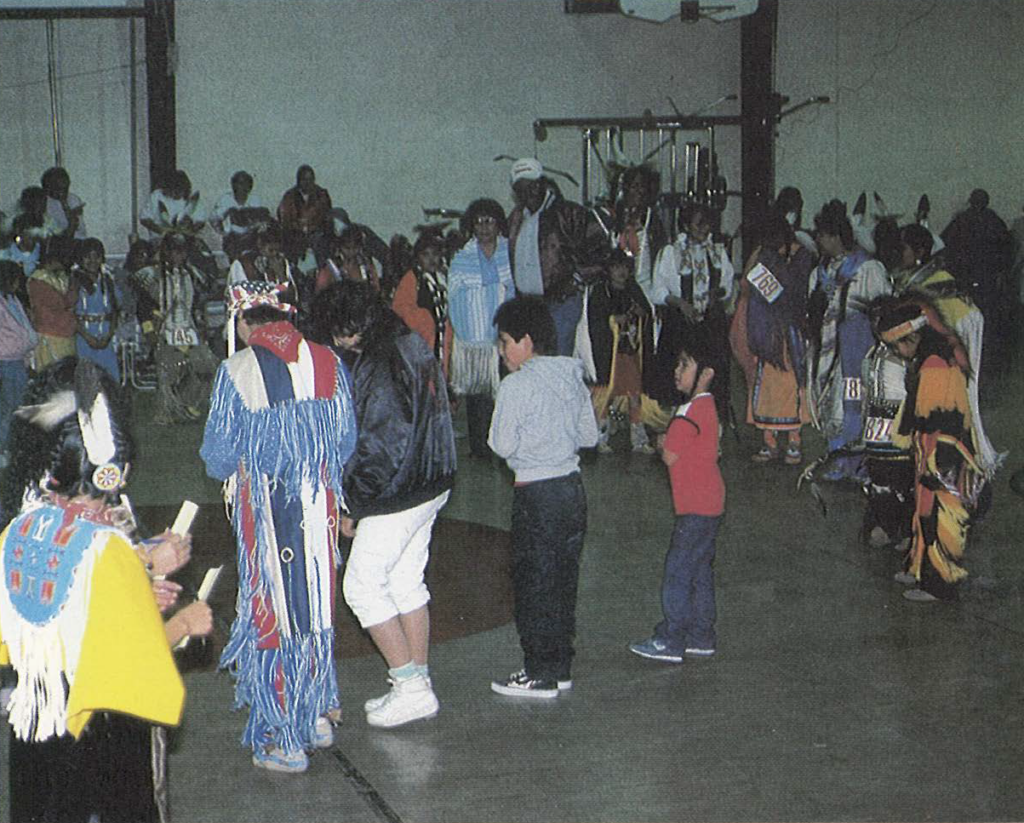
The larger pow-wows award sizable sums of money to the winning contestants. And for some dancers, the competition has taken on the quality of a professional sport. These dancers follow a regular pow-wow circuit to compete.
Many dancers are veterans of foreign wars and belong to Legion clubs. These clubs are active on reservations and in addition to other activities, they sponsor Indian dances. At a Legion Pow-wow all veterans are honored, both living and deceased. A special activity held at these pow-wows is the “War Bonnet Dance.” The honored veteran wears a full, feathered headdress as he relates his personal story of participation in a particular battle – in much the same way his ancestors did generations ago. The veteran’s awards and ribbons are on display as he leads the pow-wow participants in a dance that honors his bravery.
Dancers – Traditional and Fancy
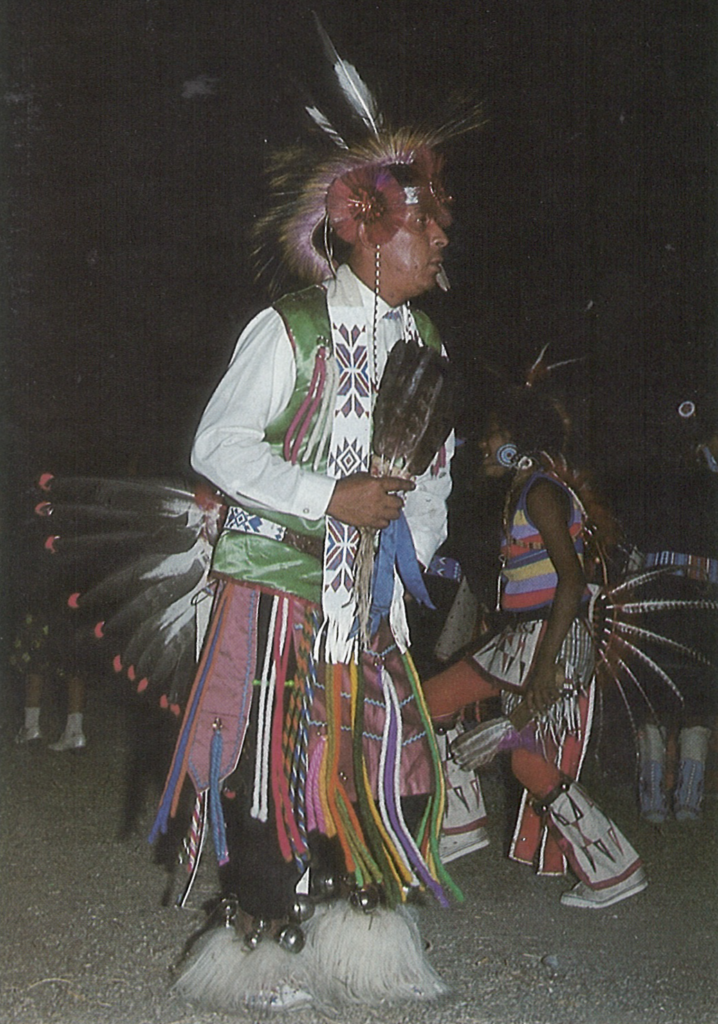
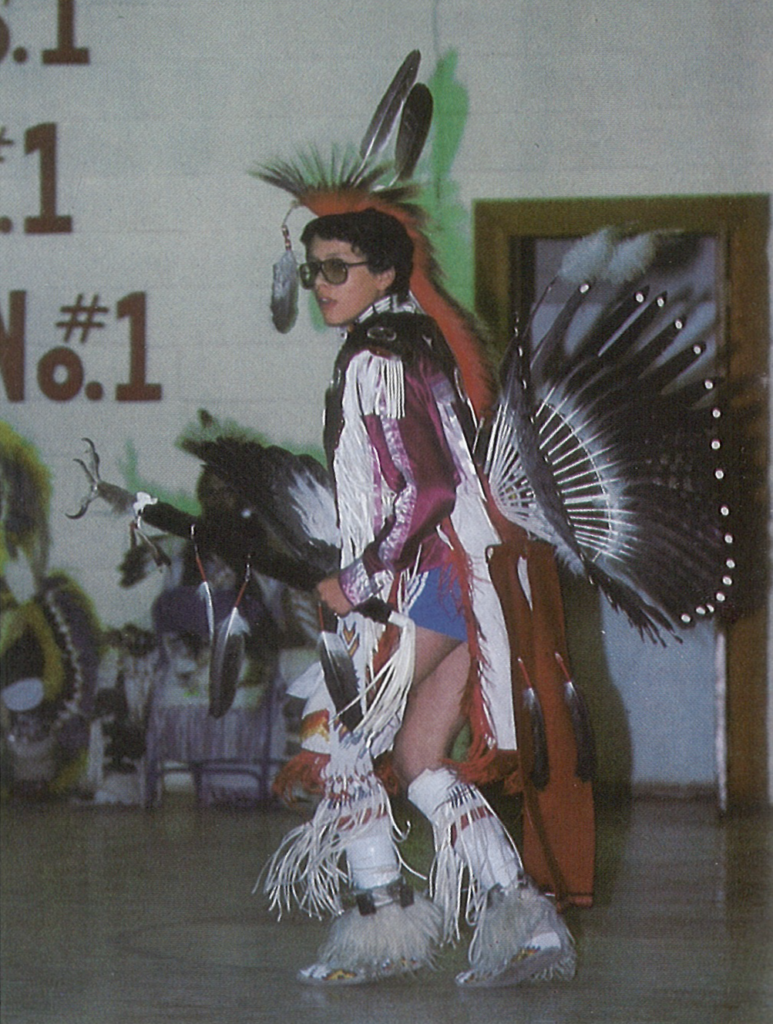
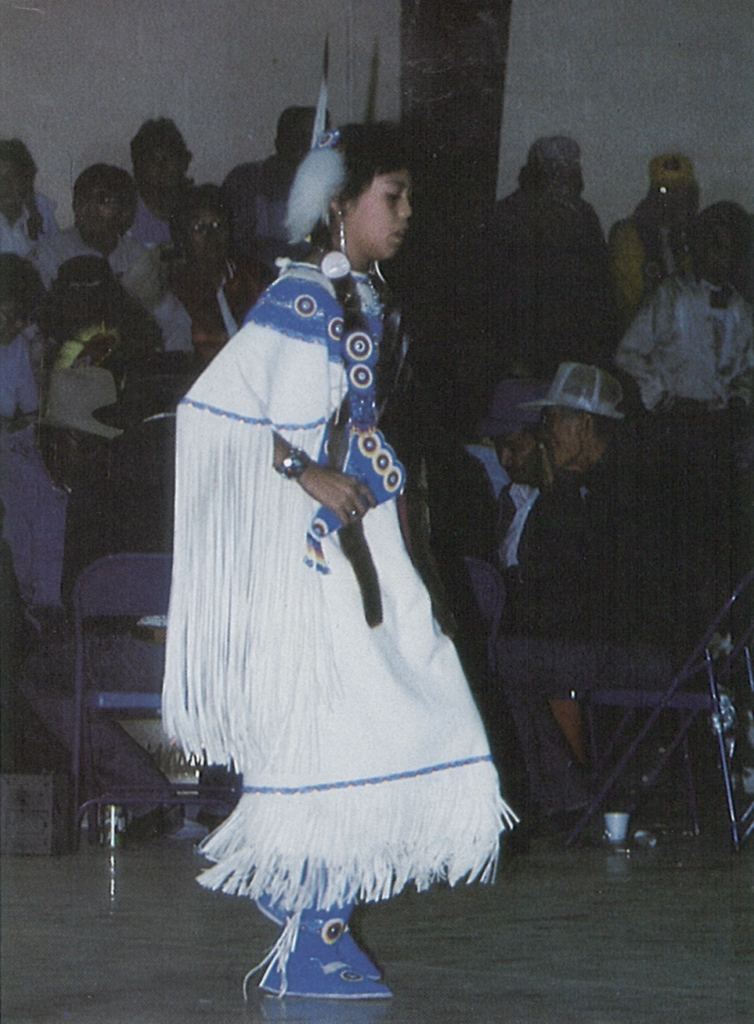
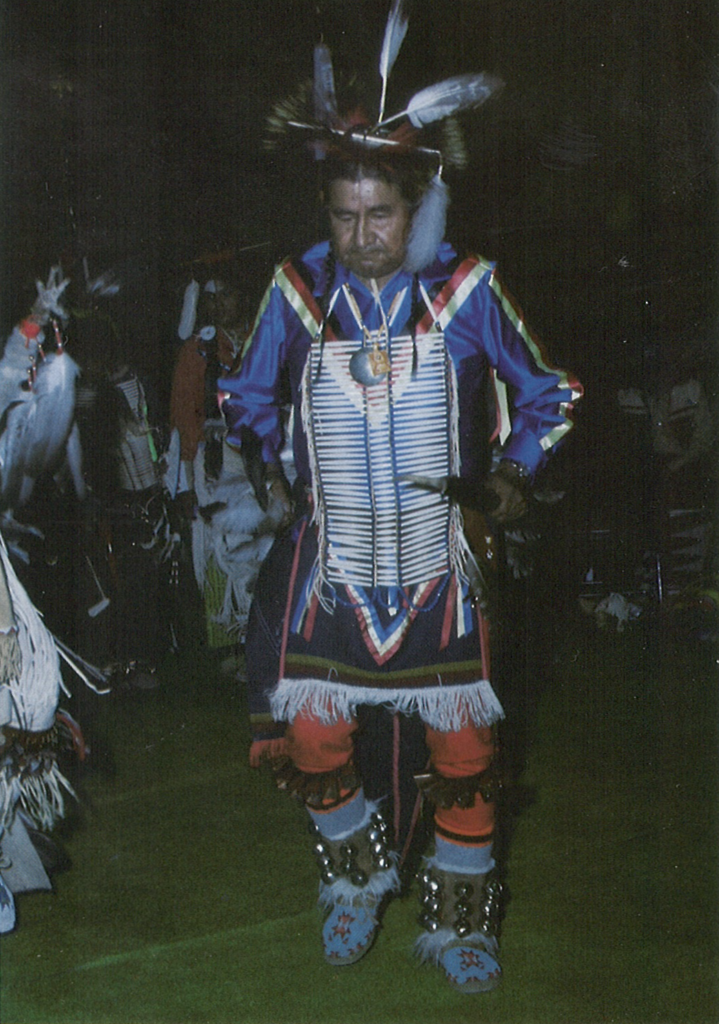
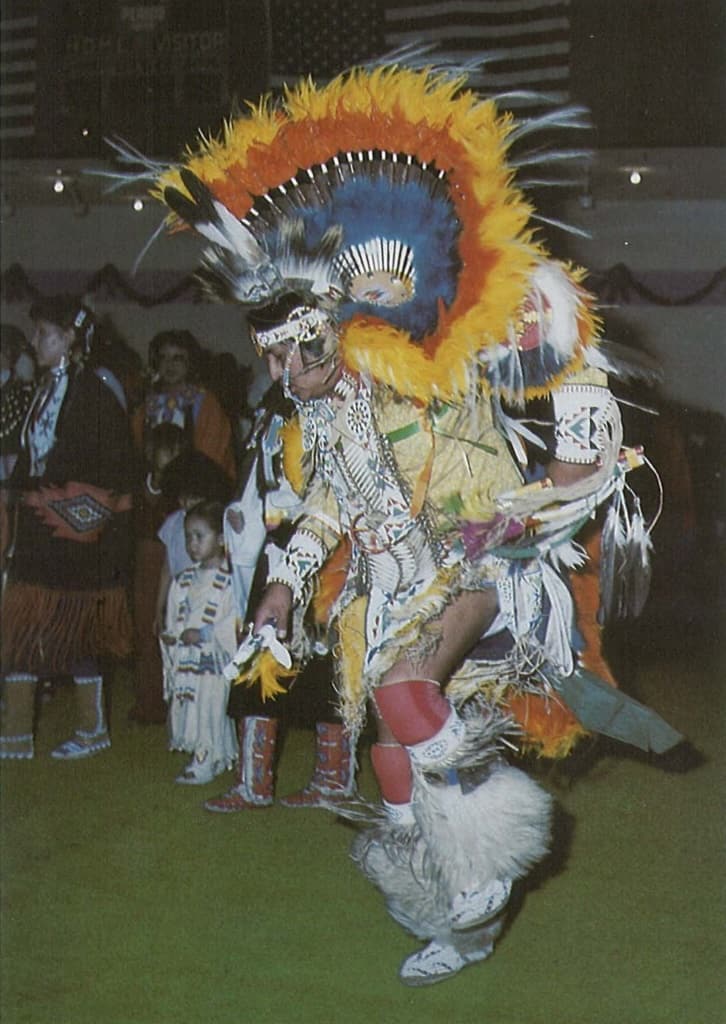
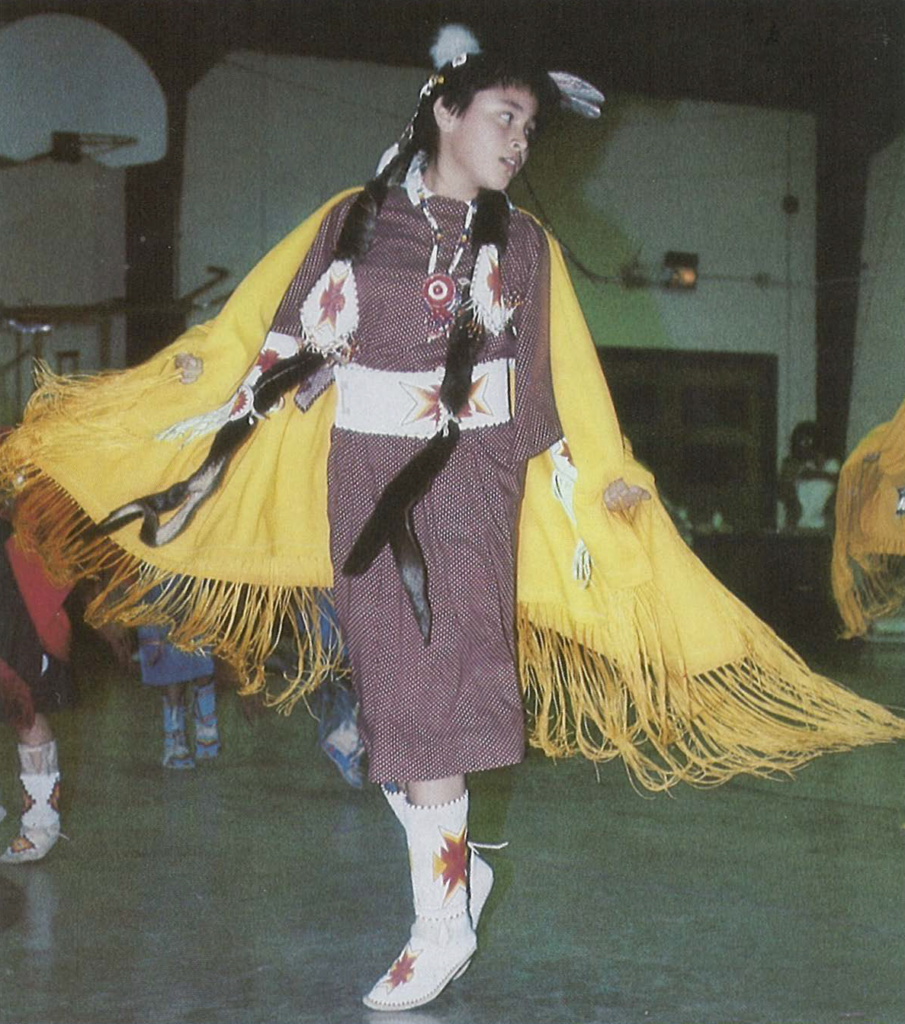
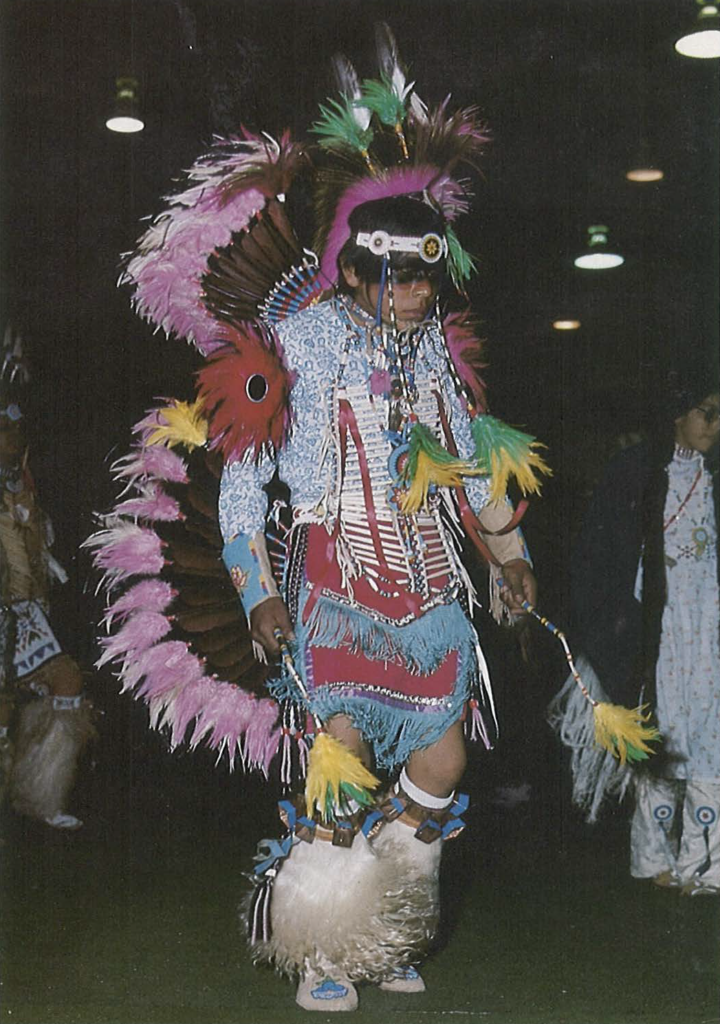
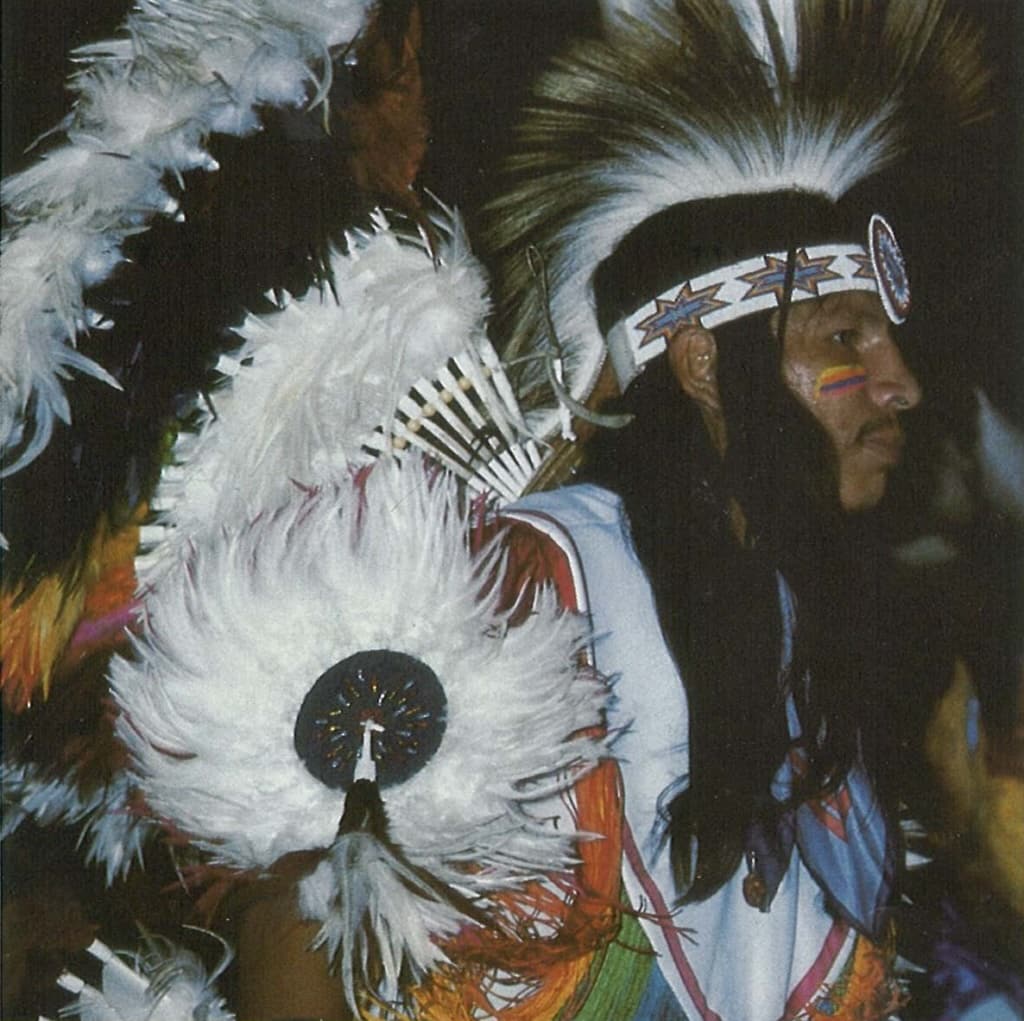
The Porcupine Roach
Early Accounts of Indian men wearing their hair roached state that the head was shaved, leaving a short crest of hair from front to back along the center of the head. Or, the entire head would be shaved except for a thin braid of hair which could be attached to a roach headdress. This hair style was the symbol for a warrior who had achieved a great war honor.
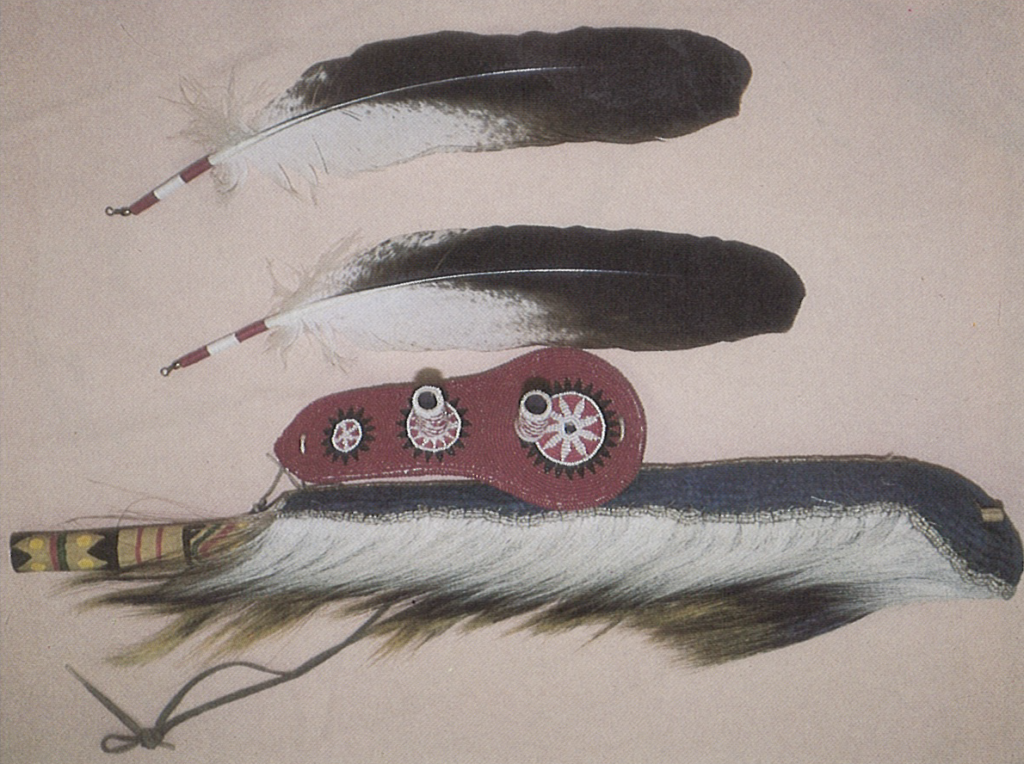
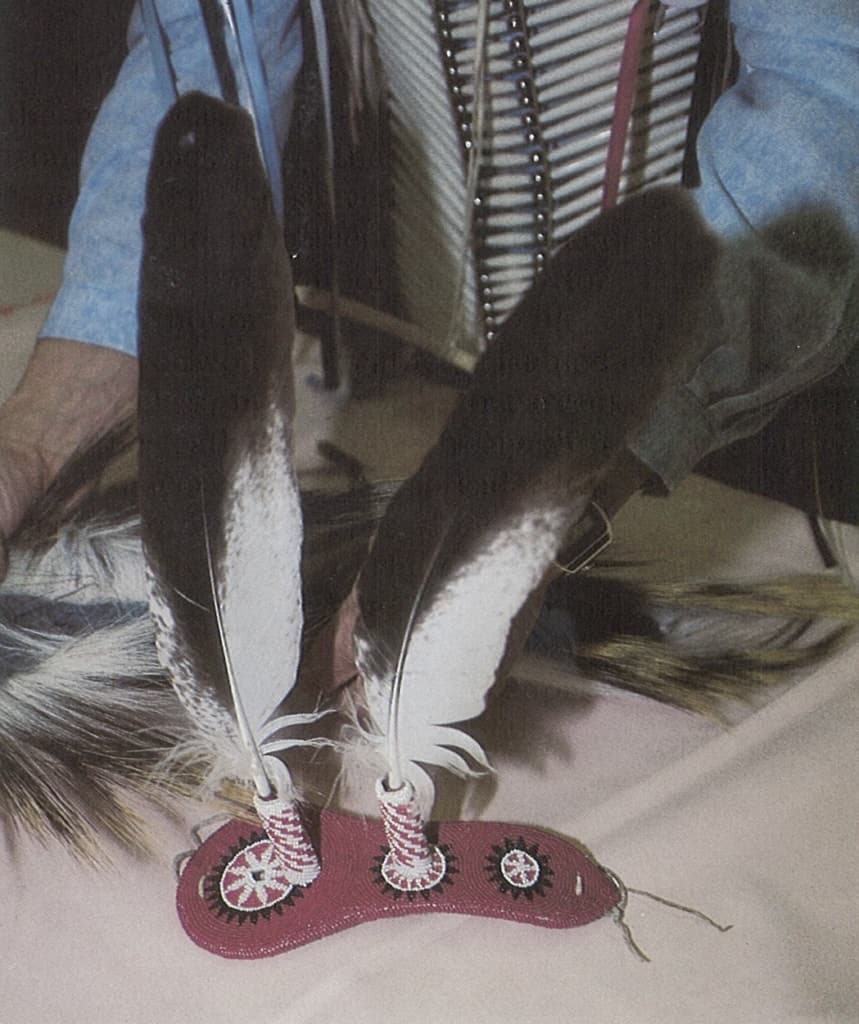
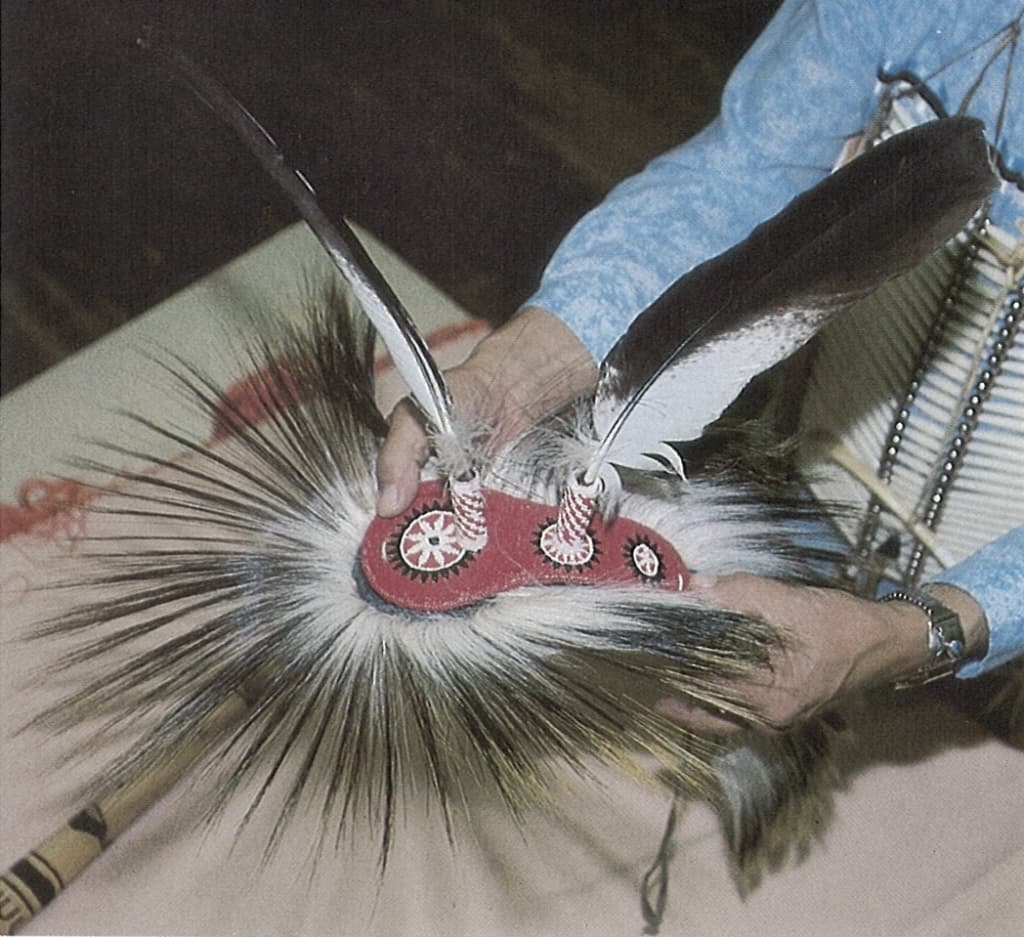
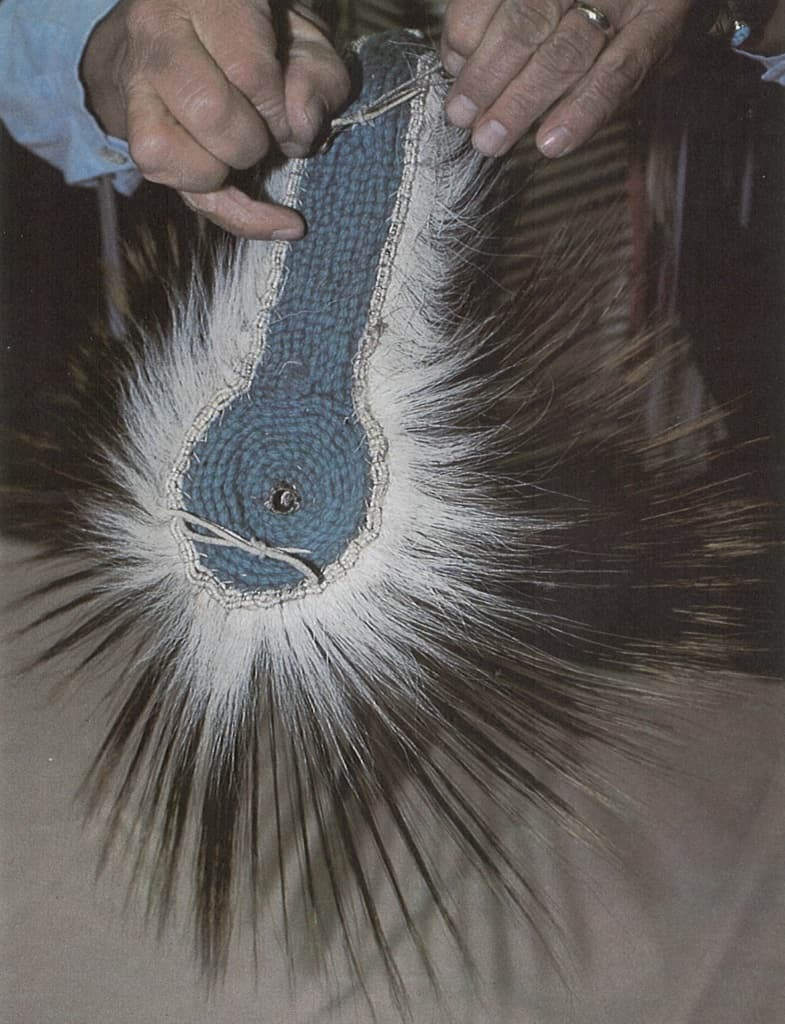
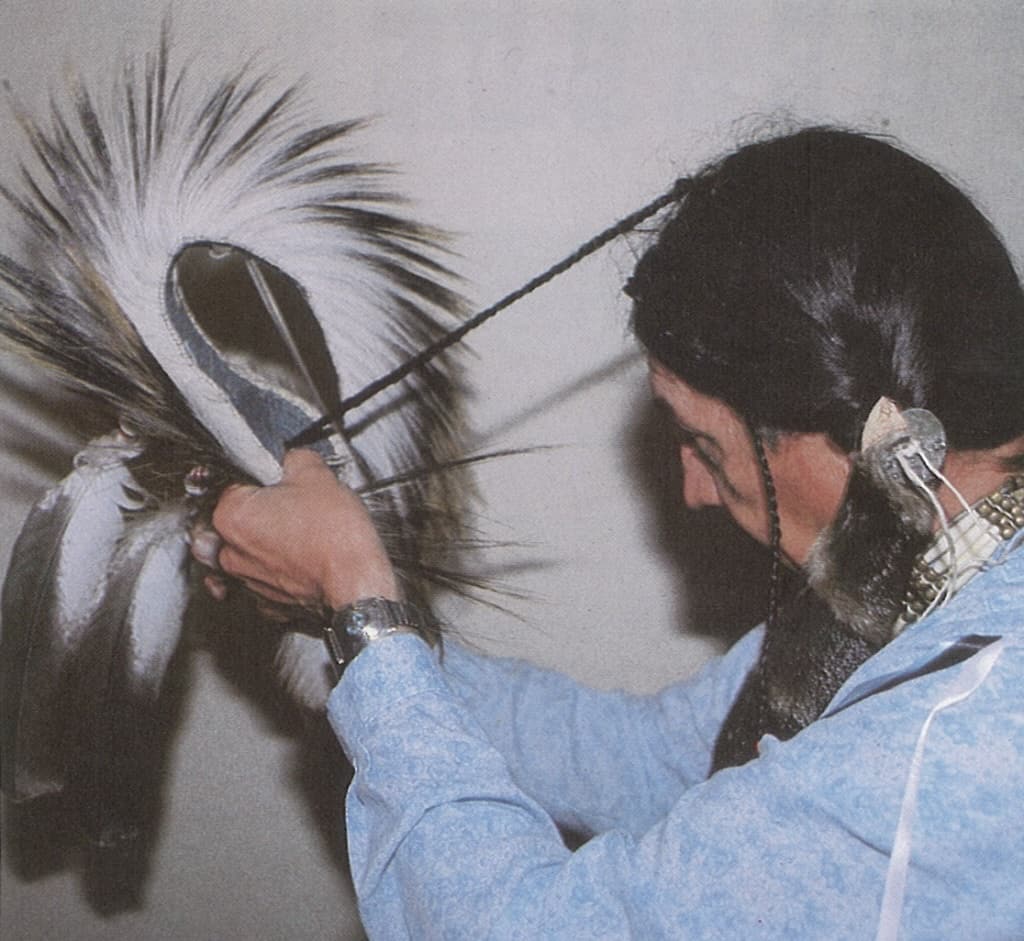
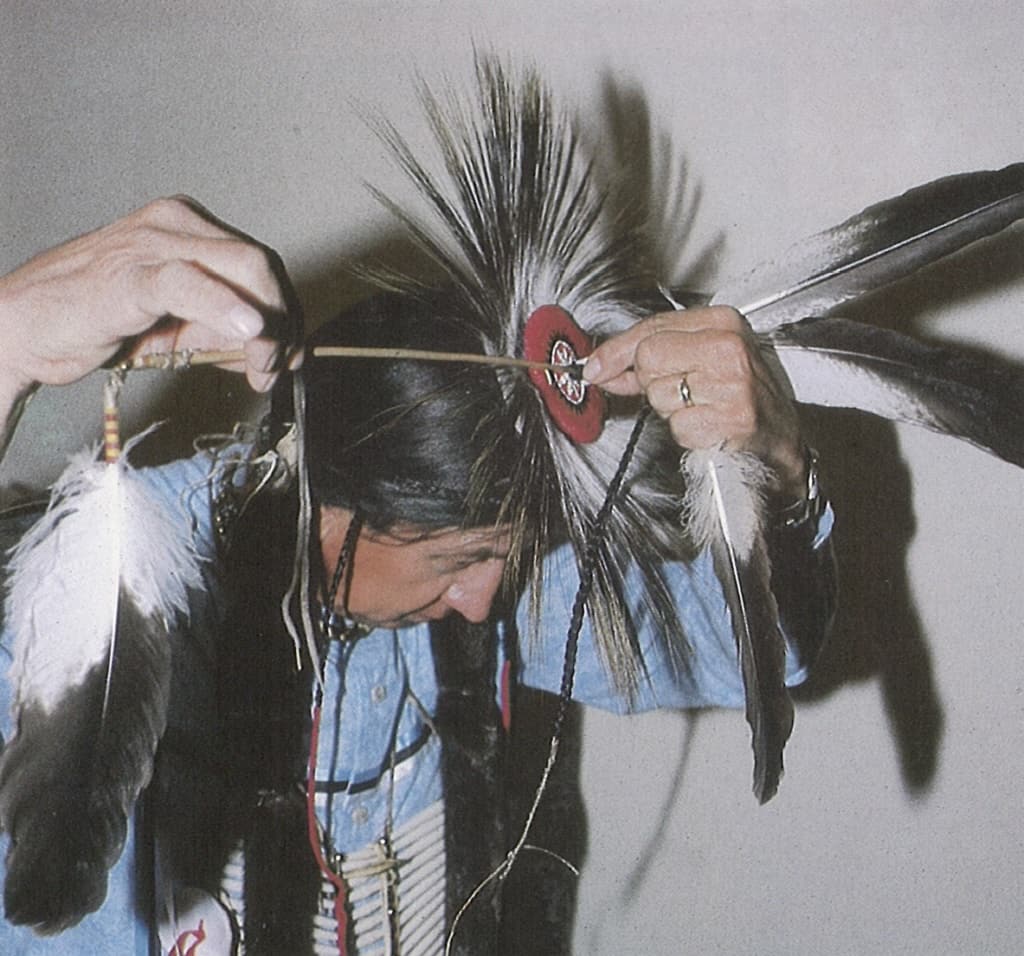
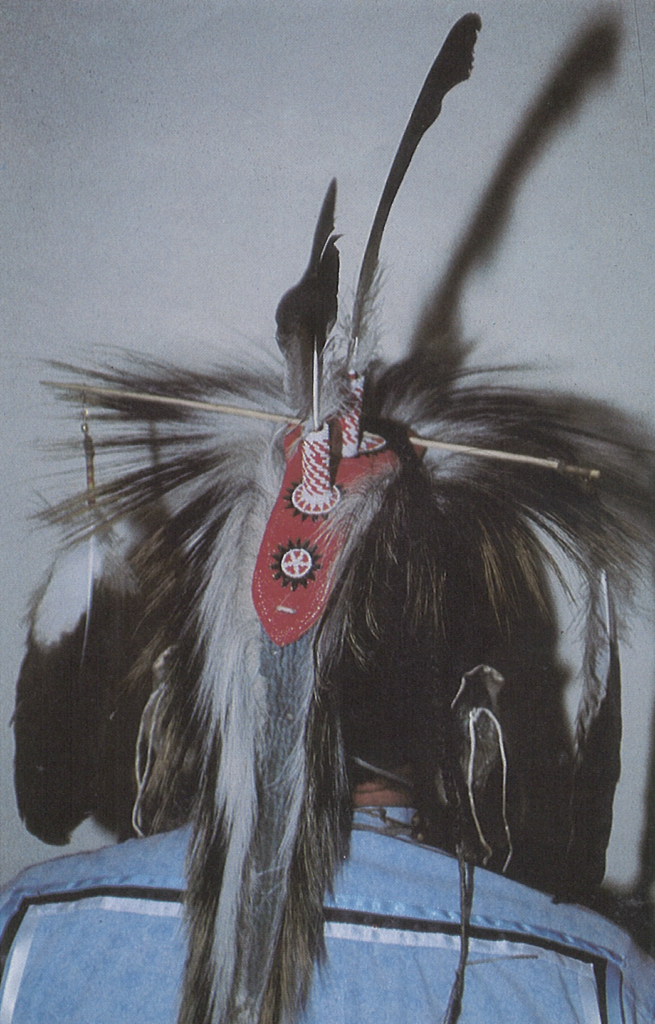
Hair roaches generally have two eagle feathers fastened to sockets made of either glass, metal, plastic or carved bone. The sockets allow the feathers to move freely with the body rhythm of the dancer. The roach spreader can be made of rawhide, leather or various types of metal and can be decorated with beads or painted. The spreader is tied to the hair base which can be made from hair of animals like the horse, moose and deer. In the early 1800s, the Sioux added the guard hairs of the porcupine to the roach, which is widely used by pow-wow dancers today. It is important that longer animal hair be used for a fuller appearance so it will move with the motion of the dancer. Hair from white-tailed deer is popular because it can be dyed different colors.
A thin braid on top of the dancer’s head is threaded through the roach and a decorated stick is placed through the braid to secure the roach in place.
The Bustle
The bustle, another major part of the man’s dance outfit, developed from the “crow belt” which is recorded being worn by Native Americans as far back as the 1600s. The crow belt, worn by leaders of the war societies, tied around the waist and suspending from it were whole, stuffed birds of prey – which hung behind the warrior. Below the stuffed birds hung two panels of cloth covered by small feathers, representing feathers that had fallen from the birds. On both sides of the belt were two, long feather spikes that symbolized warriors. The spike on the left, closest to the heart, was a friend and the spike on the right was an enemy.
The crow was often used on the belt since it was usually the first bird seen flying over a battlefield. It is said that the warrior hoped for the same traits of speed and alertness as he entered into battle. Eventually, the eagle replaced all other birds of prey used on the belt, because it was the most dominant bird.
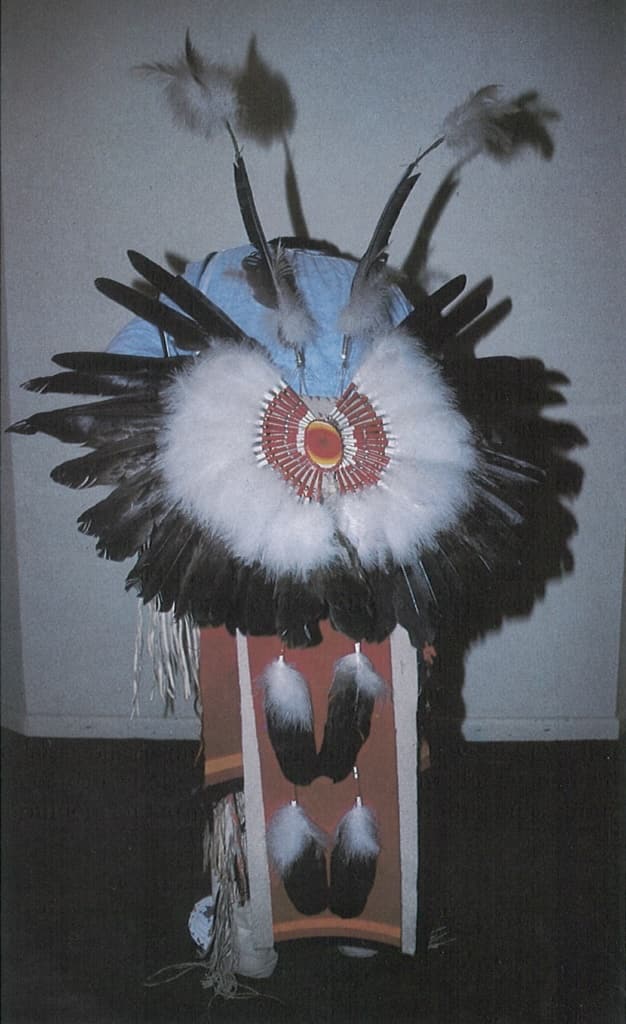
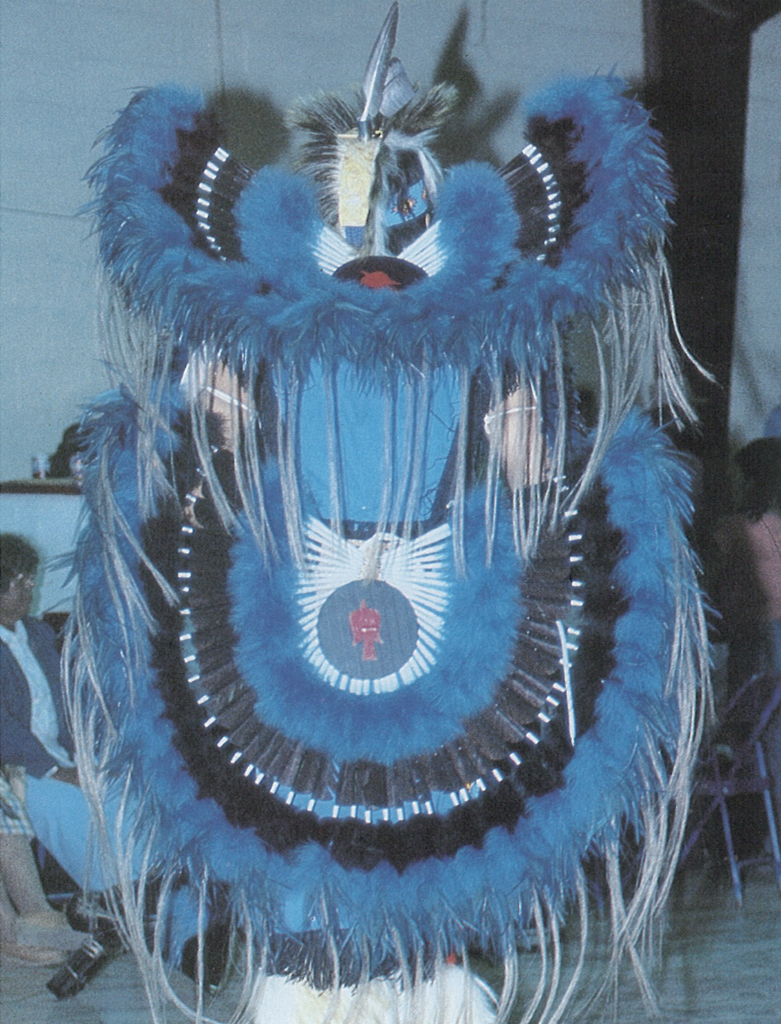
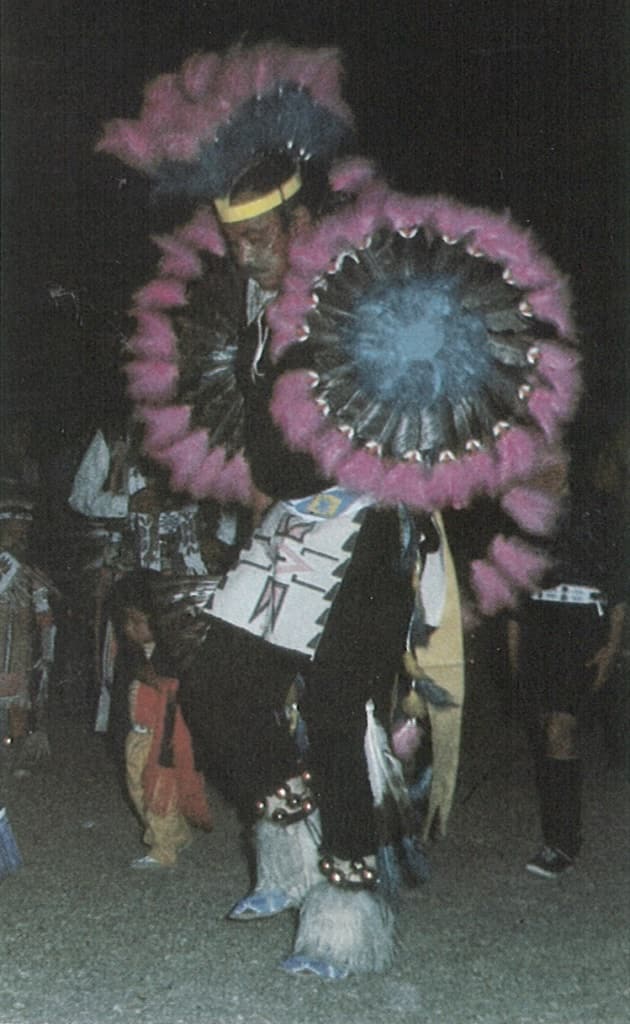
Bustles seen today have many of these same traditional characteristics. The number of bustles worn by a dancer does not signify a tribal custom. The traditional dancer ordinarily wears one large bustle on the back of his belt, while the fancy dancer can choose to wear a variety of bustles on his belt, shoulders and arms.
Women’s Regalia
The ever-changing costume styles worn at pow-wows reflect the dancer’s individual cultural expression. In early days of Indian dance, nature provided the items needed to make an outfit. Later, new articles were made available by white traders, such as: trade cloth replaced buckskin; ribbons replaced fringe; beads replaced quill-work; bells replaced clackers made from dew-claws of deer or elk. Pow-wow regalia of today often combine traditional with modern style designs, resulting in beautiful outfits.
St. Stephens Indian Mission Foundation is a non-profit organization, incorporated under the laws of the State of Wyoming on March 31, 1974, and listed on page 184 of the 1993 OFFICIAL CATHOLIC DIRECTORY. The sole purpose of the foundation is “to extend financial support to St. Stephens Indian Mission and its various religious, charitable and educational programs and other services conducted primarily for the benefit of the Northern Arapaho and Eastern Shoshone Tribes on the Wind River Indian Reservation.”
Posted in Notes From the Field